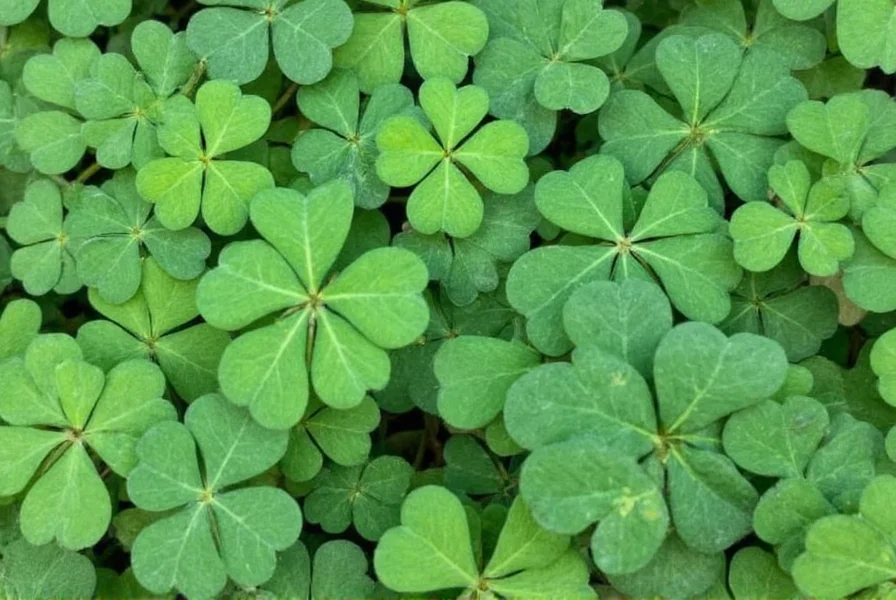The term \"4h clover\" doesn't refer to a specific clover variety but relates to clover species commonly used in 4-H agricultural education projects. 4-H youth development programs frequently incorporate clover varieties like white clover, red clover, and crimson clover in soil science, forage management, and conservation projects due to their nitrogen-fixing properties and agricultural benefits.
When agricultural students and 4-H members search for \"4h clover,\" they're typically seeking information about appropriate clover varieties for educational projects, soil improvement initiatives, or livestock forage systems. Understanding which clover species work best for specific applications is essential for successful agricultural education and land management.
Understanding 4-H's Connection to Clover Education
4-H, the youth development program administered by the Cooperative Extension System, incorporates clover varieties into numerous agricultural projects. The iconic four-leaf clover symbol actually represents the 4-H ideals: head, heart, hands, and health. While not a specific plant variety, clover serves as an excellent educational tool for teaching important agricultural concepts.
Clover's nitrogen-fixing capabilities make it particularly valuable for demonstrating sustainable farming practices. 4-H projects often use clover to teach youth about:
- Soil health improvement through nitrogen fixation
- Forage production for livestock
- Erosion control and conservation practices
- Plant identification and botany fundamentals
- Seasonal planting requirements and crop rotation

Common Clover Varieties in Agricultural Education Projects
Several clover species prove particularly valuable for 4-H agricultural projects due to their adaptability, educational value, and practical applications. Understanding these varieties helps educators and students select appropriate species for specific learning objectives.
| Clover Variety | Growth Characteristics | Primary Educational Uses | Recommended Climate Zones |
|---|---|---|---|
| White Clover (Trifolium repens) | Low-growing perennial, spreads via stolons | Soil health studies, forage management, erosion control | Zones 3-10 |
| Red Clover (Trifolium pratense) | Biennial or short-lived perennial, upright growth | Nitrogen fixation studies, hay production, crop rotation | Zones 3-8 |
| Crimson Clover (Trifolium incarnatum) | Annual, fast-growing, vibrant red flowers | Cover cropping, quick soil improvement, visual identification | Zones 5-9 |
| Alsike Clover (Trifolium hybridum) | Short-lived perennial, tolerates wet conditions | Adaptation studies, mixed forage systems, challenging soil conditions | Zones 3-7 |
Selecting the Right Clover for Educational Projects
Choosing appropriate clover varieties for 4-H projects requires careful consideration of several factors. Successful project implementation depends on matching the clover species to specific educational goals and environmental conditions.
Soil Requirements: Different clover varieties have distinct soil preferences. White clover tolerates a wider pH range (5.5-7.0) compared to red clover (6.0-7.0). Soil testing before planting helps determine which varieties will thrive in specific conditions, providing valuable lessons in soil science.
Climate Considerations: Temperature and moisture patterns significantly impact clover success. Crimson clover performs well in milder winter climates, while alsike clover handles colder temperatures better. Understanding these relationships teaches important concepts about plant adaptation and regional agriculture.
Educational Objectives: The specific learning goals should drive variety selection. For nitrogen fixation demonstrations, red clover's robust root system provides excellent visual examples. For quick results in short-term projects, annual crimson clover shows visible growth within weeks.
Growing and Maintaining Clover in Educational Settings
Successful clover cultivation in 4-H projects requires proper planting techniques and maintenance practices. These hands-on experiences teach valuable agricultural skills while producing tangible results.
Planting Techniques: Clover seeds should be planted at the proper depth (typically 1/4 to 1/2 inch) and at the right time of year. Spring planting works well for most perennial varieties, while crimson clover performs best with fall planting in many regions. Broadcasting seeds followed by light raking provides good soil contact without burying seeds too deeply.
Management Practices: Regular monitoring helps students observe growth patterns and identify potential issues. Clover requires minimal fertilization due to nitrogen fixation, but may need supplemental phosphorus and potassium. Mowing at appropriate heights teaches proper forage management techniques.
Common Challenges: Clover projects may face challenges like weed competition, disease, or insect pressure. Documenting these issues and implementing solutions provides practical problem-solving experience. Clover root rot and clover mosaic virus represent common concerns that teach valuable diagnostic skills.

Clover's Role in Sustainable Agriculture Education
Clover varieties serve as excellent teaching tools for demonstrating sustainable agricultural practices. Their nitrogen-fixing capabilities reduce the need for synthetic fertilizers, making them valuable components of educational programs focused on environmental stewardship.
In crop rotation systems, clover breaks pest cycles and improves soil structure. 4-H projects often incorporate clover into rotation with grain crops to demonstrate these benefits. The visual contrast between plots with and without clover cover crops provides compelling evidence of soil health improvements.
Understanding the economic and environmental benefits of clover helps students appreciate sustainable farming practices. Measuring yield differences, soil nutrient levels, and erosion rates in controlled experiments develops critical thinking and scientific methodology skills.
Practical Applications for 4-H Members
For 4-H members engaged in agricultural projects, clover offers numerous practical applications beyond basic education. These applications help bridge classroom learning with real-world agricultural practices.
Many 4-H livestock projects incorporate clover into forage systems, teaching youth about nutritional requirements and pasture management. Clover's high protein content makes it valuable for dairy and meat production projects, providing opportunities to study animal nutrition and productivity.
Conservation projects frequently use clover for erosion control on slopes or waterways. These applications teach important environmental protection concepts while producing visible results. Monitoring water quality improvements near clover-planted areas provides concrete data for educational reports.
For science fair projects, clover varieties offer excellent subjects for controlled experiments. Variables like planting density, soil amendments, or irrigation levels can be tested with measurable outcomes, developing research skills valuable for future academic pursuits.
Resources for 4-H Clover Projects
Several resources support successful clover projects in 4-H programs. Cooperative Extension offices provide localized guidance on variety selection and management practices. Many land-grant universities offer publications specifically designed for youth agricultural education.
Online resources from agricultural universities and government agencies provide additional information on clover cultivation. The USDA Natural Resources Conservation Service offers detailed guides on using clover for conservation purposes. Local seed suppliers often provide technical support for educational projects.
When planning clover projects, 4-H leaders should consider connecting with local farmers who use clover in their operations. Field visits provide valuable real-world context and help students understand practical applications of their educational projects.
Frequently Asked Questions
What is the best clover variety for beginner 4-H agricultural projects?
Crimson clover is often recommended for beginner 4-H projects due to its fast growth, visual appeal, and relatively simple management requirements. As an annual variety, it produces noticeable results within a single growing season, which works well for short-term educational projects. Its vibrant red flowers provide clear visual markers for growth stages, making it easier for students to track progress and understand plant development cycles.
How does clover improve soil health in agricultural education projects?
Clover improves soil health primarily through nitrogen fixation, where rhizobia bacteria in root nodules convert atmospheric nitrogen into plant-available forms. This natural process reduces the need for synthetic fertilizers and demonstrates sustainable farming practices. Clover's extensive root system also improves soil structure, increases organic matter, and prevents erosion. In educational settings, students can measure soil nutrient changes, observe root development, and compare crop yields in plots with and without clover cover crops.
Can clover be used in crop rotation with vegetables for 4-H garden projects?
Yes, clover works well in vegetable garden rotations for 4-H projects. Red clover or white clover planted as a cover crop before vegetable production adds nitrogen to the soil and improves soil structure. For best results, terminate the clover about 3-4 weeks before planting vegetables to allow decomposition. This rotation sequence demonstrates important agricultural concepts including nutrient cycling, soil health management, and sustainable production practices that benefit both educational objectives and garden productivity.
How do I properly establish clover for a 4-H soil conservation project?
For soil conservation projects, plant clover at 8-12 pounds per acre (or proportionally less for small demonstration plots). Prepare the soil by removing existing vegetation and loosening the top layer. Plant seeds at 1/4 to 1/2 inch depth in early spring or late summer. Keep the area moist until establishment. White clover or alsike clover work particularly well for erosion control on slopes or near waterways. Monitoring erosion rates before and after establishment provides valuable data for project documentation and demonstrates the practical benefits of conservation practices.











 浙公网安备
33010002000092号
浙公网安备
33010002000092号 浙B2-20120091-4
浙B2-20120091-4